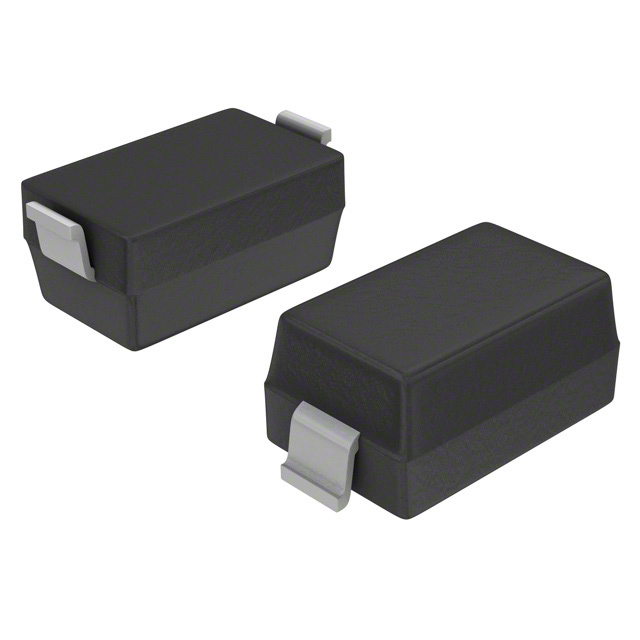Viz Specifikace pro podrobnosti o produktu.

BZT52C20-7
Product Overview
Category
The BZT52C20-7 belongs to the category of Zener diodes.
Use
It is commonly used for voltage regulation and protection in electronic circuits.
Characteristics
- Voltage regulation capability
- Reverse breakdown voltage of 20V
- Low leakage current
- Small package size
Package
The BZT52C20-7 is typically available in a SOD-123 package.
Essence
This Zener diode serves as a crucial component in maintaining stable voltage levels in electronic circuits.
Packaging/Quantity
It is usually packaged in reels with quantities varying based on manufacturer specifications.
Specifications
- Reverse Breakdown Voltage: 20V
- Power Dissipation: 500mW
- Forward Voltage: 1V
- Maximum Zener Impedance: 40Ω
- Operating Temperature Range: -65°C to 150°C
Detailed Pin Configuration
The BZT52C20-7 Zener diode typically has two pins, with the cathode identified by a band or marking on the body of the diode.
Functional Features
- Precise voltage regulation
- Protection against voltage spikes
- Low operating impedance
- Compact form factor
Advantages
- Accurate voltage regulation
- Small size
- Low leakage current
Disadvantages
- Limited power dissipation capability
- Narrow operating temperature range
Working Principles
The BZT52C20-7 operates based on the principle of the Zener effect, where it maintains a constant voltage across its terminals when reverse biased.
Detailed Application Field Plans
The BZT52C20-7 is widely used in: - Voltage regulators - Overvoltage protection circuits - Signal clamping applications
Detailed and Complete Alternative Models
Some alternative models to the BZT52C20-7 include: - BZX84C20 - 1N4744A - MMBZ5220B
This provides a comprehensive overview of the BZT52C20-7 Zener diode, including its category, use, characteristics, package, specifications, pin configuration, functional features, advantages and disadvantages, working principles, detailed application field plans, and alternative models.
Seznam 10 běžných otázek a odpovědí souvisejících s aplikací BZT52C20-7 v technických řešeních
What is the maximum power dissipation of BZT52C20-7?
- The maximum power dissipation of BZT52C20-7 is 300mW.
What is the reverse voltage of BZT52C20-7?
- The reverse voltage of BZT52C20-7 is 20V.
What is the forward voltage drop of BZT52C20-7?
- The forward voltage drop of BZT52C20-7 is typically 0.9V at a forward current of 20mA.
What is the operating temperature range of BZT52C20-7?
- The operating temperature range of BZT52C20-7 is -65°C to +150°C.
Can BZT52C20-7 be used for voltage regulation in low-power applications?
- Yes, BZT52C20-7 can be used for voltage regulation in low-power applications due to its low forward voltage drop and high reverse voltage.
Is BZT52C20-7 suitable for overvoltage protection in electronic circuits?
- Yes, BZT52C20-7 can be used for overvoltage protection in electronic circuits due to its ability to clamp the voltage and protect downstream components.
What are the typical applications of BZT52C20-7 in technical solutions?
- BZT52C20-7 is commonly used in voltage clamping, overvoltage protection, voltage regulation, and signal conditioning in various technical solutions.
Does BZT52C20-7 require any external components for proper operation?
- BZT52C20-7 does not require any external components for basic operation, making it easy to integrate into technical solutions.
What are the key characteristics that make BZT52C20-7 suitable for technical solutions?
- BZT52C20-7 offers low leakage current, fast response time, and high reliability, making it well-suited for a wide range of technical applications.
Are there any specific layout considerations when using BZT52C20-7 in technical designs?
- It is important to minimize lead lengths and ensure proper heat sinking to maximize the performance and reliability of BZT52C20-7 in technical designs.

